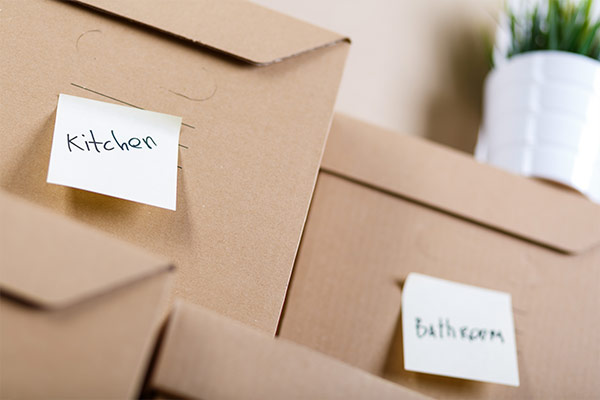Our companies are backed by the Best Pick Guarantee. Call one today!
Moving can be an incredibly stressful process, so it’s wise to plan ahead and take precautions to help it go smoothly—especially when vacating a rental property. Before scheduling a final walkthrough with your landlord, take the following steps to ensure that you forfeit as little of your rental security deposit as possible.
Moving-out Checklist for Rentals
Clean all surfaces thoroughly. Wipe down all countertops, mirrors, blinds, and windows until they are completely free of dust and residue. Sweep, mop, or vacuum all the flooring, and spot treat any noticeable stains that were not there when you moved in. Review the details of your rental agreement because, occasionally, the lease will specify that certain cleaning tasks be done prior to vacating, such as having carpets professionally cleaned.
 Take down all wall hangings. Oftentimes, small nail holes that resulted from hanging artwork or other decorative elements will not require any additional work or payment on your part. However, if your bare walls show signs of any significant damage, like larger holes or dents, you may be responsible for repair. If you have painted any walls, you will most likely need to repaint them the original color prior to move out. Check with your landlord or read the details of your lease to be sure. Your landlord or leasing office may be able to provide you with touch-up paint if you don’t need much or aren’t sure of what color you need.
Take down all wall hangings. Oftentimes, small nail holes that resulted from hanging artwork or other decorative elements will not require any additional work or payment on your part. However, if your bare walls show signs of any significant damage, like larger holes or dents, you may be responsible for repair. If you have painted any walls, you will most likely need to repaint them the original color prior to move out. Check with your landlord or read the details of your lease to be sure. Your landlord or leasing office may be able to provide you with touch-up paint if you don’t need much or aren’t sure of what color you need.
Deep clean all of the appliances. Microwaves, ovens, refrigerators, and freezers are common areas for spills and splatters, and these stains become caked on and much harder to remove over time. You will likely be charged a hefty cleaning fee if you do not take care to leave these items in good, clean condition. Read more detailed information on how to best clean each one of your appliances.
Repair anything that was your fault. Normal wear and tear is unavoidable, and typical maintenance tasks—HVAC system maintenance or pest control, for example—are usually arranged by the landlord, so any damage relating to that type of work should not fall on your shoulders. However, if damage occurs as a direct result of negligent behavior on your part, you will likely be responsible for repairs. It is often less costly to arrange this yourself than to go through the landlord, who may choose a more expensive company or charge you an elevated rate to make up for the inconvenience.
 Make all of your moving arrangements well in advance. It is often required to submit a written notice or your intent to vacate a rental 60 days prior to your move-out date. This gives the landlord ample time to arrange for a replacement tenant. Once you submit your notice, contact a professional mover, or persuade friends to help you move out fully within those 60 days. You could be subject to costly penalties if you are not completely out of the property by the time you said you’d be.
Make all of your moving arrangements well in advance. It is often required to submit a written notice or your intent to vacate a rental 60 days prior to your move-out date. This gives the landlord ample time to arrange for a replacement tenant. Once you submit your notice, contact a professional mover, or persuade friends to help you move out fully within those 60 days. You could be subject to costly penalties if you are not completely out of the property by the time you said you’d be.
Once your space is cleaned and repaired, you should set up a rental home or apartment walkthrough with your landlord. Check back later this week for what to expect during a walkthrough and what you can do afterward to be confident that your rental deposit will be returned to you.


























